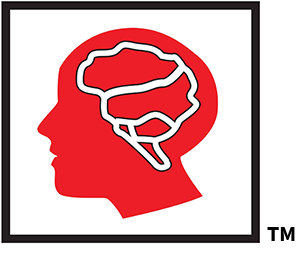You know, I’ve met so many folks (including close friends) who mix up OCD and anxiety. It’s so common—like, you mention one, and suddenly everyone thinks you’re talking about the other! It’s easy to understand why. Both can make your heart race and your mind do somersaults. Still, understanding the difference between OCD and anxiety can make life so much easier, not just for you but for everyone around you.
There’s real comfort in knowing what’s what. It makes conversations with loved ones simpler. It also helps you support a child, partner, or friend who’s struggling (trust me, I’ve noticed how much this matters in my family). We’ll break down what sets these two apart, how they sometimes overlap, and what red flags to watch for as you figure out which one you—or someone you love—might be dealing with.
Pull up a chair, grab a snack, and let’s make this topic simple. It doesn’t have to be complicated, and by the end, I bet you’ll feel a lot more confident sorting it all out!
Defining OCD and Anxiety Disorders

Getting a grip on the difference between OCD and anxiety starts with understanding the basics. These terms get tossed around a lot, but there’s a big difference in how they show up and affect people. Both can make the heart pound and bring a lot of stress, but the thoughts, feelings, and behaviors you see in each one are pretty unique. Let’s break each down, family-style—no need for medical textbooks or complicated talk here.
What is OCD?
Obsessive-compulsive disorder, or OCD, is a mental health disorder that’s a bit of a pest—it latches onto people’s thoughts and routines in a way that’s hard to shake. The name itself holds a clue: obsessions and compulsions.
- Obsessions are those sneaky thoughts or images that pop up and just won’t leave you alone. They might show up as worries about germs, doubts about whether a door is locked, or even unwanted forbidden thoughts. No matter how much someone tries to ignore them, these obsessions keep coming back.
- Compulsions are the actions or rituals someone feels driven to do, often to make the obsessions go away or at least ease the anxiety. It can look like washing hands over and over, checking the oven ten times, arranging items in a very specific order, or even counting things silently.
Think of it as a merry-go-round: the obsessions are the tune you hear on repeat, and the compulsions are the way you keep pressing that same “restart” button, hoping this will finally bring peace and quiet. But the peace is brief, and the ride starts up all over again.
People with OCD often know their thoughts and routines don’t make sense deep down, but the urge to follow through feels impossible to resist. It’s not about wanting things neat or being quirky. It’s about feeling trapped, and it can make everyday tasks a real challenge.
What is Anxiety?
Now, let’s talk about anxiety—or more precisely, anxiety disorders, with the main star in this category being generalized anxiety disorder (GAD). Anxiety disorders are about that sticky, all-over sense of worry that ties the stomach in knots and makes the brain race. It doesn’t always come with rituals or specific triggers like OCD. Instead, the worry is broad and stretches into many areas of life.
Symptoms of anxiety disorders often show up as:
- Excessive Worry: The worry isn’t just about one thing—it can be about school, work, family, health, or the future. It’s tough to manage, and it usually sticks around for months.
- Restlessness and irritability: A person might seem on edge. Fidgeting hands, bouncing knees, or even snappy comments can be clues.
- Physical symptoms: These can sneak up quietly—think tired muscles, headaches, stomach aches, or trouble sleeping. Sometimes, it feels like your body is carrying around a backpack filled with bricks.
- Difficulty concentrating: All that worry gobbles up brain space, making it hard to focus on work or school.
Other anxiety disorders include panic disorder (sudden panic attacks), social anxiety (a big worry about social situations), and phobias (intense fears about specific things). But the main ingredient with any anxiety disorder? Worry shows up often and stays much longer than you’d expect.
While both OCD and anxiety disorders can make someone feel anxious, what sets them apart is this: OCD centers on unwanted, repetitive thoughts and the urge to perform rituals, while anxiety disorders focus on ongoing fear and worry about many different things. That’s the heart of the difference between OCD and anxiety—and once you see it, it becomes much easier to spot.
Key Differences Between OCD and Anxiety

Understanding the real difference between OCD and anxiety often means getting into the smaller details—the little quirks that set them apart in everyday life. Both can make the mind busy and the heart heavy, but they wear different hats in how they show up. Let’s break down these differences so they’re simple, easy to spot, and not confusing at all.
Nature of Thoughts and Fears
Here’s where the stories really split. OCD comes with unwanted, intrusive thoughts—think of them as jump scares for your brain. These aren’t just basic worries. They crash in, out of nowhere, and stick around even when you try to shoo them away. For example, someone might picture germs spreading everywhere or worry that something terrible will happen unless things are kept a certain way. No matter how much they want to get rid of the thoughts, they keep popping back in.
- OCD thoughts are:
- Unwanted and scary.
- Often don’t match what the person values or wants.
- Heavy with guilt or shame, which can make them hard to share.
Now, with plain old anxiety (like generalized anxiety), the worries are loud but not always so weird or out-of-the-blue. They usually make sense in the real world—money, health, work, family. You might find yourself stuck in a loop, fretting and “what if”-ing, but these worries follow a pattern that most people can relate to.
- Anxiety worries tend to be:
- More realistic or connected to regular life.
- Repeated, but not totally bizarre or out of character.
- Less about shame, more about feeling out of control or overwhelmed.
So, when you spot the difference between OCD and anxiety, look for that odd, relentless thinking in OCD, versus the broad, anxious worrying in GAD. It’s kind of like comparing a broken record stuck on one weird song to a playlist of regular worries that plays all day.
Compulsions vs. Worrying
Another way to see the difference between OCD and anxiety is to look at what happens after the thoughts start.
In OCD, the mind’s answer to intrusive thoughts is a compulsion. Compulsions are actions or mental rituals—even things like counting in your head—that are supposed to keep something bad from happening, or to get rid of an uncomfortable thought. Washing, checking, arranging, praying, repeating phrases…it can be almost anything. The big thing? Compulsions always have a strong “I have to do this” feeling, even if the person knows it’s not actually logical.
- Compulsions in OCD:
- Happen over and over, in the same way.
- Bring quick relief—but never for long.
- Take up a ton of time or energy.
- Try to “cancel out” the bad thought or fear.
With anxiety, you don’t get this urge to complete a ritual. Instead, the usual response is…more worrying, or maybe avoiding the things that trigger nagging fears. For example, someone with anxiety might constantly fret about the future, avoid driving if they fear accidents, or put off doctor appointments because of health fears.
- Worrying and avoidance in anxiety:
- Can last all day, but it’s mostly mental.
- Avoids triggers, rather than acting out rituals.
- Drains energy, but without repetitive patterns or strict rituals.
- Can make someone freeze, procrastinate, or withdraw.
Think of OCD compulsions as being trapped in a dance you never wanted to learn, and anxiety as trying to block out background noise you can’t shut off. Same tired feeling, different reasons.
Impact on Daily Life and Functioning
The real trouble hits when both OCD and anxiety start to mess with daily life. Both can distract from work, school, friendships, or family time—but the impact looks a little different.
People with OCD might:
- Spend hours on rituals, making them late for school, work, or social stuff.
- Avoid anything that could set off obsessions—sometimes whole places or people.
- Get stuck in routines to the point that there’s barely any room left for fun or relaxation.
- Feel guilty or embarrassed about their habits, which can lead to hiding symptoms from loved ones.
On the flip side, people dealing with generalized anxiety usually:
- Struggle to quiet their mind, leading to tiredness, less focus, and feeling on edge.
- Worry about so many things, it’s hard to relax or enjoy simple pleasures.
- Avoid stressful situations, which can shrink their world bit by bit.
- Feel worn down and stressed almost all the time, but without repetitive behaviors or clear-cut rituals.
There’s definitely overlap—both can strain relationships, zap energy, and make life heavier than it needs to be. But at its core, the difference between OCD and anxiety shows up in how rigid and time-consuming OCD rituals are, versus the wide, shapeless cloud of worry that anxiety brings.
Quick recap:
- OCD = stuck on specific, “odd” thoughts and repeated actions.
- Anxiety = worried about many things, without ritual behavior.
- Both interrupt life, but in their own way.
Spotting these differences not only helps clear up confusion, it brings families and friends closer, opening the door to understanding, better care, and—best of all—more hope.
Diagnosis and Treatment Approaches

Knowing the difference between OCD and anxiety is more than just splitting hairs—it affects real lives, every single day. Getting the right diagnosis and care totally changes the tone of the story. Families know what they’re up against and feel prepared for the road ahead. So, how do mental health professionals actually tell these siblings apart, and what can treatment look like? Let’s break down how the pros do it and what helps most.
Diagnosis: How Professionals Differentiate Between OCD and Anxiety
If you ever wondered how a doctor figures out if someone has OCD or an anxiety disorder, let me tell you—they’re not just guessing. Mental health professionals use interviews, observation, and specific tools to spot the markers that set these conditions apart.
In the office, the process often looks like this:
- Structured interviews: These are guided talks, often with a list of questions, to understand symptoms, triggers, and how much they disrupt daily life.
- Self-report scales: Questionnaires can measure how often intrusive thoughts, worries, or rituals are happening.
- Observation and conversation: Sometimes you see more just by listening to how someone talks about their day or handles stress.
The key diagnostic differences professionals look for:
- OCD:
- Presence of obsessions (persistent, unwanted thoughts, images, or urges).
- Presence of compulsions (repetitive actions or mental routines aimed at reducing distress).
- Recognition (at some point) that these thoughts/rituals are excessive or don’t make real sense.
- Significant distress or wasted time because of the symptoms (think: over an hour every day).
- Anxiety Disorders (like GAD):
- Excessive worrying about multiple areas of life (work, school, health, relationships).
- Worries feel uncontrollable, but usually have some root in reality.
- Symptoms like muscle tension, trouble sleeping, or feeling on edge for at least six months.
- No compulsions—just a flood of worry, and maybe avoidance.
Red flags the pros use to tell them apart:
- OCD’s thoughts are usually bizarre or frightening and lead to rituals.
- Anxiety’s worries are about common life issues, not off-the-wall, and don’t drive rituals.
- If rituals are present—it’s OCD. If it’s all worry—think anxiety.
Kids and adults can show these signs a bit differently, and sometimes they overlap. But, a trained eye can spot the subtle signals and make things much clearer for everyone.
Treatment Options: Therapy and Medication
Once a diagnosis is made, the next question is always, “What do we do about it?” The answer can be a mix of therapy, medication, support, and a good batch of patience. When it comes to the difference between OCD and anxiety in treatment, there’s overlap, but some things work better for one than the other.
Let’s start with the therapies that wear the crown:
- Cognitive Behavioral Therapy (CBT)
- CBT is often the main choice for both OCD and anxiety.
- It helps people catch unhelpful thinking and replace it with something kinder and more accurate.
- With anxiety disorders (like GAD), CBT teaches tools to challenge worries and adopt healthier habits.
- With OCD, CBT might look similar, but the focus usually shifts toward a special offshoot…
- Exposure and Response Prevention (ERP)
- ERP is something of a superhero for OCD.
- In ERP, you face the scary thought (the obsession) without performing the usual ritual (the compulsion).
- Over time, the brain learns the world won’t fall apart if you don’t wash your hands ten times or check the stove all night.
- ERP can be tough and feels scary at first. But when it works, the freedom it brings is amazing—I’ve seen families breathe easier, day by day.
- For anxiety (without OCD), exposure methods might be used to face fears, too, but there aren’t compulsions to resist. It’s about breaking free from avoidance.
A quick summary of therapy differences:
- OCD: ERP is usually needed, with or without traditional CBT.
- Anxiety: Traditional CBT and exposure therapies work well to challenge worries and avoid avoidance.
Now, let’s peek at medications—because for some, therapy alone isn’t quite enough:
- Medications:
- Both OCD and anxiety often respond to a group of medicines called SSRIs (selective serotonin reuptake inhibitors).
- Think medications like fluoxetine (Prozac), sertraline (Zoloft), or escitalopram (Lexapro).
- For OCD, higher doses or longer treatment might be needed compared to anxiety.
- Sometimes, other meds are added if things are really stuck, but SSRIs are the first line.
- Both OCD and anxiety often respond to a group of medicines called SSRIs (selective serotonin reuptake inhibitors).
- Other Modalities:
- Some folks find comfort in support groups, mindfulness training, or family therapy.
- Good sleep, exercise, and routine can be big helpers for both OCD and anxiety.
- For OCD that doesn’t budge, there are newer treatments—like deep brain stimulation—reserved for the toughest cases.
Here’s a quick table to spot the differences in treatment focus:
| Treatment | OCD | Anxiety Disorders (GAD, etc.) |
|---|---|---|
| CBT | Yes (with ERP focus) | Yes (focus on worry management) |
| ERP | Core treatment | Sometimes (for avoidance) |
| SSRIs | Yes (often higher doses) | Yes |
| Support Groups | Helpful | Helpful |
| Lifestyle Changes | Very helpful | Very helpful |
| Advanced Treatments | DBT, brain stimulation | Rarely needed |
The biggest thing: For OCD, just talking about your worries doesn’t work—you have to address the ritual cycle head-on. For anxiety, the game plan is to break the ‘worry – avoid – worry’ loop and learn you’re stronger than those anxious feelings.
No matter where you or your loved one is starting from, understanding these treatment paths helps put you on the right road. It’s all about finding the right fit and remembering there’s hope—even if it takes time. Taking the first step toward help is always something to be proud of.
Why Understanding the Difference Matters

Let’s talk about why sorting out the difference between OCD and anxiety is more than just labeling feelings—because trust me, it can make a world of difference for families, friendships, and even the person struggling. When folks mix these two up or rely on what they see in movies or social media (which is all too common), it can lead to some messy stuff. It’s more than just a technicality; it shapes how people are treated, how they feel about themselves, and how quickly they get real help. There’s a lot riding on understanding this difference, and it’s closer to home than you might think.
The Risks of Misdiagnosis or Self-Diagnosis
Making a guess about your struggles—or your child’s—that turns out to be off the mark comes with some hidden dangers. It’s like using the wrong set of keys for your front door; you’re stuck outside, cold, and frustrated, wondering why nothing’s working. Here’s what can go wrong when OCD and anxiety are swapped or misunderstood:
- Getting the wrong treatment: If someone thinks they have anxiety when it’s really OCD (or the other way around), they might end up with therapies that don’t help. For example, talking through worries works for anxiety, but with OCD, it can make the loops worse if compulsions aren’t addressed directly.
- Wasted time and money: Families might spend months—sometimes even years—trying the “gentle” fixes or bouncing between counselors before anyone realizes what’s actually happening. The right plan can be simple, but only if you know what you’re dealing with.
- Heartbreak and confusion: Misdiagnosis can leave a person feeling like a puzzle piece that will never fit. They may start to believe they’ll always struggle, never noticing there’s a solution within reach.
Self-diagnosis brings its own can of worms. The internet is full of quizzes and “Which disorder are you?” charts, but real diagnosis looks deeper. Self-diagnosing can lead to blaming, shame, or even missing bigger health issues. Having a professional take a careful look is like asking a farmer—not a stranger on the street—to check if your tomatoes are ripe. You get answers you can trust.
The Heavy Burden of Stigma
Let’s get real for a second. Stigma, especially with mental health, hangs around like a wet blanket. Not knowing the difference between OCD and anxiety lets myths spread. Folks with OCD might hear things like “Oh, you just like things neat!” People with anxiety are told, “You worry too much, chill out.” It stings, doesn’t it?
Why does this matter?
- Shame grows in the dark: When people don’t understand what’s going on, they hide their struggles. Parents hush up their child’s rituals, partners try to ignore the rewashing of hands, and kids try to “just stop worrying.” The more we pretend, the harder it gets.
- Families can feel alone: When someone’s stuck in a ritual or lost in worry, knowing that it has a name—and that others deal with it too—brings a huge sigh of relief. Stigma drops when stories are shared and explained.
- Support makes a difference: It’s easier to step in with love and patience when you know what’s going on. Instead of rolling their eyes at the fourth time you check the stove, your family cheers you on as you try a new strategy from therapy.
Chipping away at stigma starts with information. The more we talk about the real difference between OCD and anxiety, the less scary these words sound—and the more likely someone is to reach out for help.
The Importance of Accurate Information for Seeking Help
Getting things straight isn’t just for word nerds—it’s the golden ticket to real help, real relief, and a shot at peace. When you can spot what’s going on, everything changes:
- Faster access to care: Knowing the specifics—the strange, sticky thoughts of OCD or the wide-ranging worry of anxiety—means you (or your child) can get to someone who understands and has the right tools.
- More hope for real change: Once families know what’s happening, they can start learning. Suddenly, rituals aren’t just “bad habits” and worry isn’t “being weak.” There’s logic, relief, and even a bit of hope in the mix.
- Support from the right people: Schools, work, and even extended family can be brought in when there’s language to explain what’s going on. There’s power in being able to ask, “Can you give me a minute?” Or saying, “This is my OCD talking, not me.”
- Better future planning: With the right tag, you can connect with support groups, plan for school accommodations, and build a safety net. Even setbacks feel smaller because you know what you’re facing.
Let’s face it: getting the difference between OCD and anxiety right opens doors. It means you stop stumbling in the dark and finally flip on the lights. You see the real struggle—and the real victories, too.
The best part? There’s always hope, especially when you have the right information and a community behind you. Whether you’re a parent, a spouse, or someone peeking into their own worries, getting clear on what’s going on isn’t just smart—it’s a little act of kindness for everyone involved.
Conclusion
OCD and anxiety look similar on the surface, but they have very different roots. OCD brings sharp, unwanted thoughts and ritual-like actions that never quite bring peace. Anxiety is more like a heavy, restless worry that stretches across daily life without the same rigid routines.
Spotting the difference between OCD and anxiety is a kindness to yourself and those you love. It helps you get the right support—not just another “wait and see.” Getting the right diagnosis opens the door to hope, relief, and better days ahead.
If you see yourself or a loved one in these words, don’t try to sort it all out alone. Reach out to a professional who truly understands these differences. You deserve answers, real help, and the feeling that you don’t have to go at it solo.
Thank you for spending time here and caring enough to learn. If this post rings true, share it with someone who could use a little understanding or extra support. And if you have your own story or thoughts, I’d love to hear them. The more we share, the easier it gets—for everyone.
